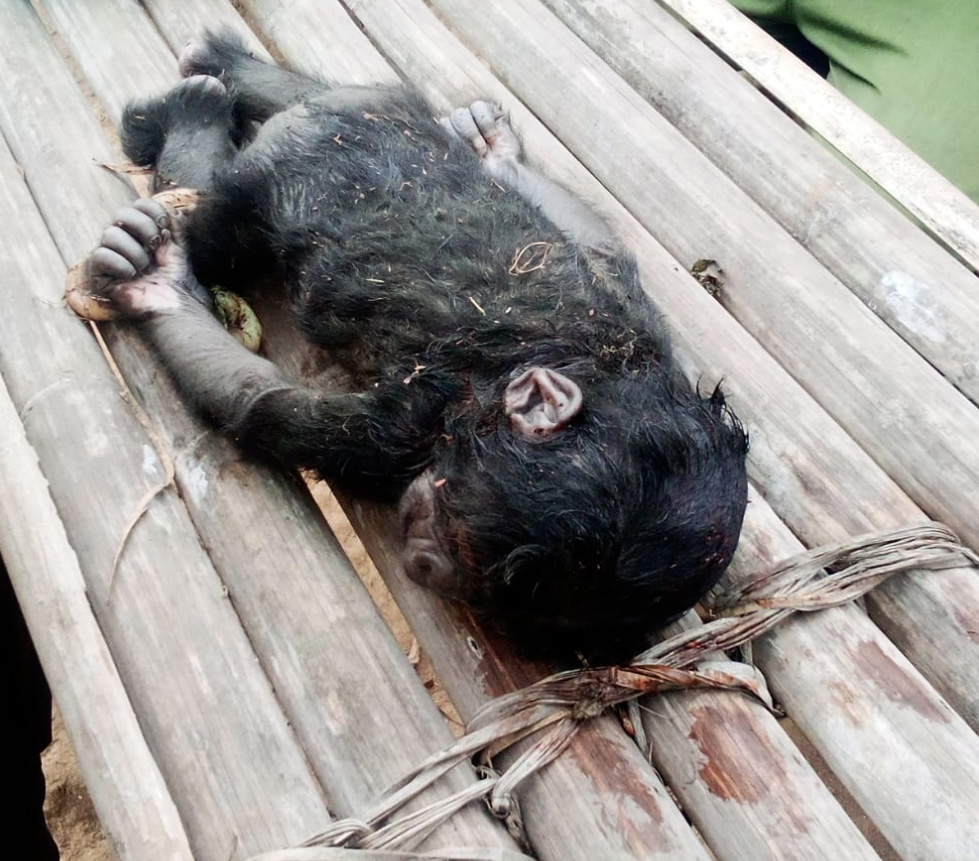Another Gorilla Gives Birth on Mt. Tshiaberimu
Categories: Journal no. 65, Democratic Republic of the Congo, Mt. Tshiaberimu, Grauer's Gorilla
For over a decade, there has been little hope for the survival of the Mount Tshiaberimu (or Tshiabirimu) gorillas. Several great ape experts considered these gorillas to be on the verge of becoming extinct: the population was beyond the point of recovery. Monitoring showed that not a single gorilla was born between 2009 and 2018, and the number of gorillas on Mt. Tshiaberimu fell drastically from 13 to 6 during that time. In 2018, a baby gorilla was born but died only a few days later. In 2019, another individual disappeared, further reducing the number of gorillas to only five (data from ICCN monitoring).
The possibility that the females were infertile began to be considered. However, during 2019, when no one really believed in the future survival of these gorillas, the female Mwengeshali gave birth to a baby, who was named Espoir (Hope). The same female had another baby in late 2021. A sense of optimism started to grow again, although it was still doubtful that a single fertile female could save such a vulnerable population. The population currently consists of seven individuals including two silverbacks, three females, and two youngsters. In the last Gorilla Journal, we wrote: "We hope that Mwengeshali can give birth to more babies, and that the other gorilla females can also become mothers."
Our wish was fulfilled. At 8 am on 11 June 2022, trackers were present when Ndekesiri gave birth for the first time. Unfortunately, the umbilical cord did not detach quickly and became entangled with the vegetation. When the female tried to untangle herself, the cord was torn and the baby died as a result.
What can we learn from this death?
My opinion on lessons learnt may not be shared by others. The birth of a third gorilla baby by another female gave us further hope because it means that the Mount Tshiaberimu group has two fertile adult females. The first baby, Hope, now a juvenile, is also female. She increases the number of the Mount Tshiaberimu females to four. We know that the death rate among gorilla infants is 1 in 3, so the death of the latest baby gorilla is not surprising. Nonetheless, its birth gives us hope for the future of a population on the brink of extinction. We are waiting with bated breath to determine the sex of Mwengeshali's latest baby. We also know that when a female gorilla loses her baby, she comes back into estrus quickly and may conceive again.
Claude Sikubwabo Kiyengo

